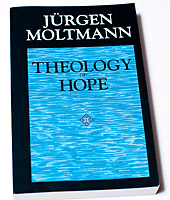A Theologian’s Legacy
Forty years later, Moltmann remains at the center of theological discussion — from the crucifixion to ecology
By Daniel Castelo, SPU Assistant Professor of Theology [casted1@spu.edu] and Douglas Koskela, SPU Assistant Professor of Theology [kosked@spu.edu]

|
Since the publication of Theology of Hope more than 40 years ago, Jürgen Moltmann has continued to shape theological discussion throughout the world. He is widely regarded as one of the most influential theologians of the 20th century.
Following the popularity of Theology of Hope,
Moltmann made a similar impact with the publication
in 1972 of his second major work, The Crucified God. Regarded as a Christian “theology after Auschwitz,” The Crucified God developed a vivid theology of the cross that emphasized God’s loving solidarity with a suffering world. Moltmann’s “early trilogy” was completed with the publication of The Church in the Power of the Spirit in 1975. Each of the books in this trilogy explored the Christian faith from a distinct point of view: the resurrection of Jesus (Theology of Hope),
the cross of Jesus (The Crucified God), and Pentecost (The Church in the Power of the Spirit).
Moltmann’s mature theological vision was expressed over the course of 20 years in his second major collection of works. This collection was a series of six “contributions to theology.” These contributions explored the doctrine of God (The Trinity and the Kingdom, 1980), creation (God in Creation, 1985), the life and work of Jesus Christ (The Way of Jesus Christ, 1989), the Holy Spirit (The Spirit of Life, 1991), Christian hope (The Coming of God, 1995), and theological method (Experiences in Theology, 2000).
Amid this diverse set of themes, it is Moltmann’s ecological theology in particular that has garnered a great deal of attention in recent years. While many of his works address the contemporary ecological crisis, he develops a theological response to the issue most directly in God in Creation. There he emphasizes both God’s presence within creation and the importance of the biblical notion of the Sabbath to our doctrine of
creation. He advocates resting not only from work, but also from practices that pollute the environment, reminding us that God’s promise of a new creation does not justify the destruction of the earth in the present.
Moltmann’s style has received both praise and critique. Rather than holding to traditional formulations, he has used creativity and imagination in his choice of sources and dialogue partners. He engages a wide variety of thinkers with the aim of offering modern secular society a contemporary theology that takes into account the struggles and doubts of our current situation. Critics of Moltmann’s work have suggested that the way he develops certain themes presses the boundaries of the classical Christian tradition. The breadth and originality of his theological program,
however, have kept him at the center of the crucial theological conversations of his generation.
Back to Features Home |